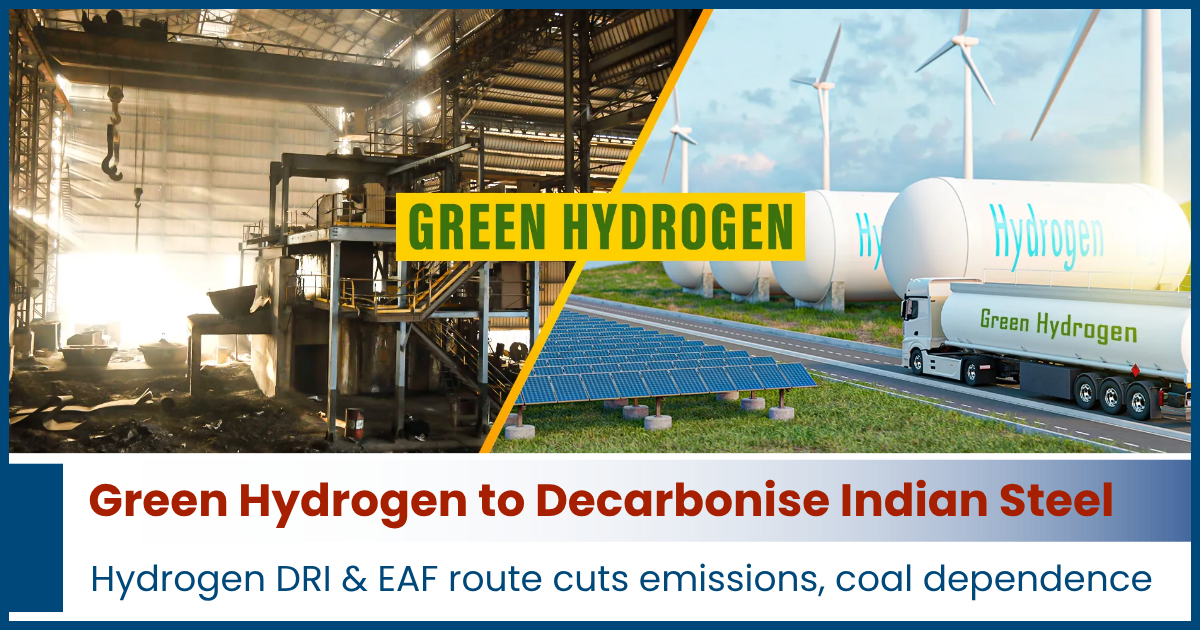India–US Trade Tensions Rise Over Steel and Auto Tariffs NMDC Limited reports a 38% drop in Q4 FY24 consolidated net profit RINL to Raise $23 Million Through Land Sales Amid Crisis

Green hydrogen is emerging as a key lever to decarbonise India’s steel sector, enabling hydrogen-based direct-reduced iron (DRI) paired with electric arc furnaces (EAF) and cutting reliance on coking coal.
Industry analysis highlighted in a recent ETEnergyWorld report projects hydrogen-DRI/EAF could supply around 13% of India’s ~403 MTPA steel output by FY2050, rising to about 41% of ~597 MTPA by FY2070. The shift would also improve energy security by reducing imports of coking coal.
Policy momentum is building. Under the National Green Hydrogen Mission, India is targeting 5 MMT per year of green hydrogen capacity by 2030 alongside a large expansion of renewables. Work on a green-steel framework and standards is expected to guide investment and market adoption.
The report notes complementary routes—such as iron electrolysis and greater scrap-based EAF use—but stresses the need for blended finance, supportive regulation, and rapid scale-up from pilots to commercial plants to bring costs down and meet long-term climate goals.
Also Read : Steel Demand to Reinforce MSMEs Amid Rising Costs Jindal Steel Commissions 5 MTPA Blast Furnace at Angul Plant